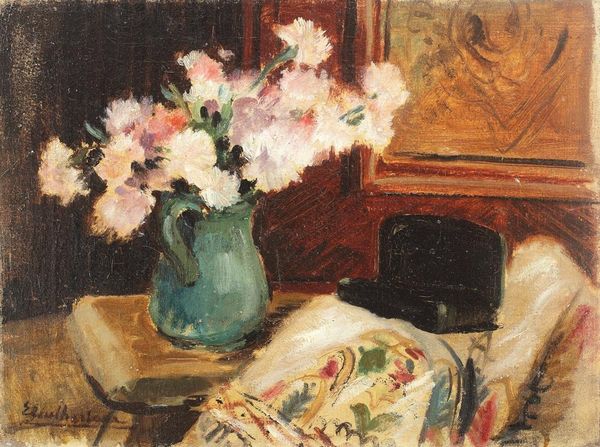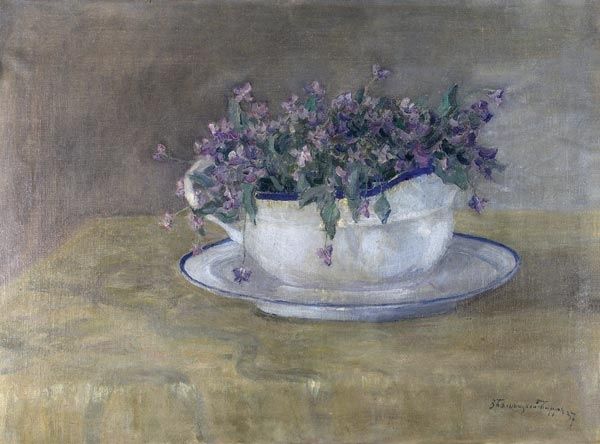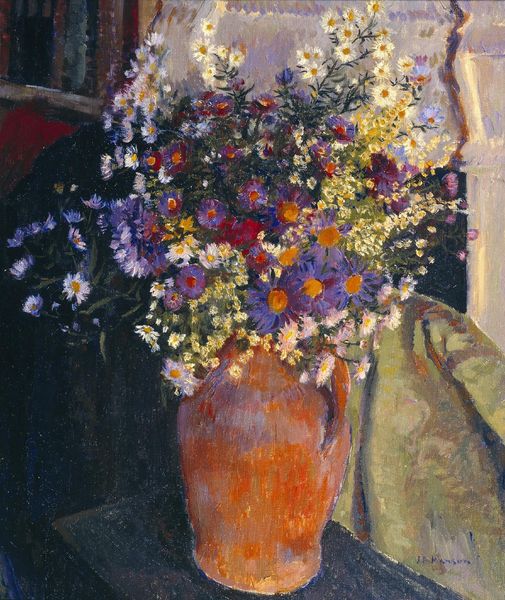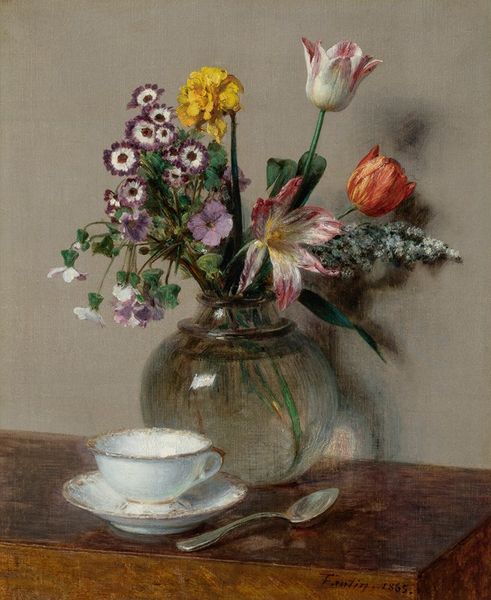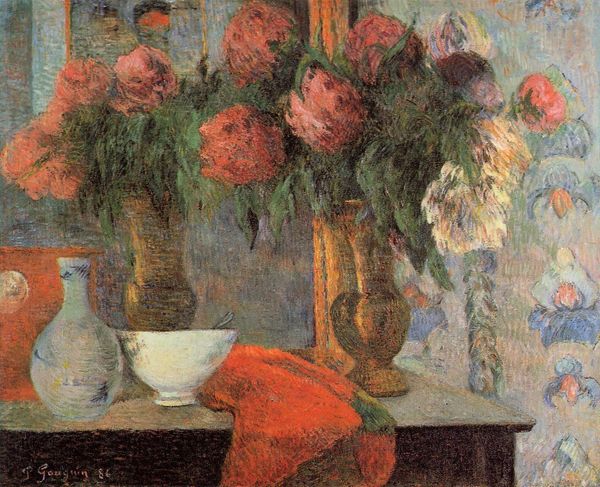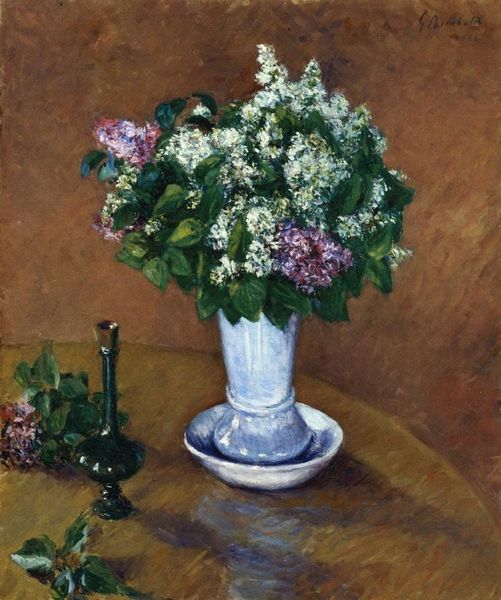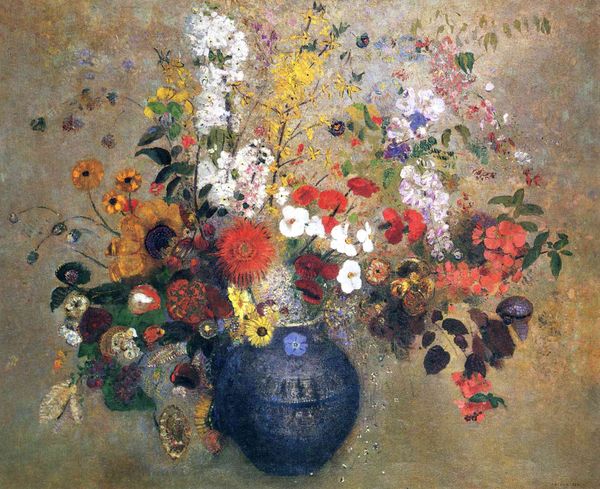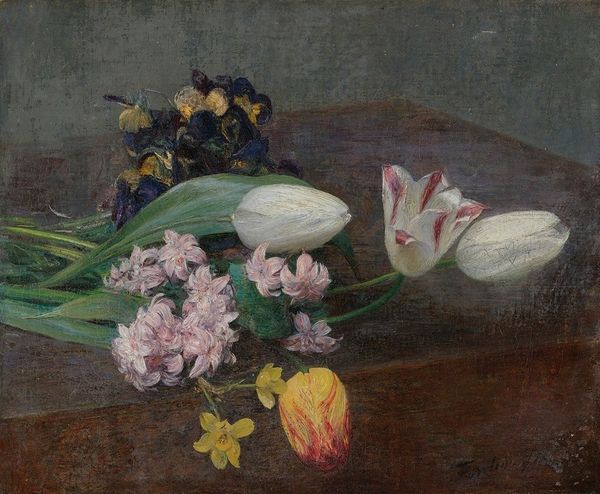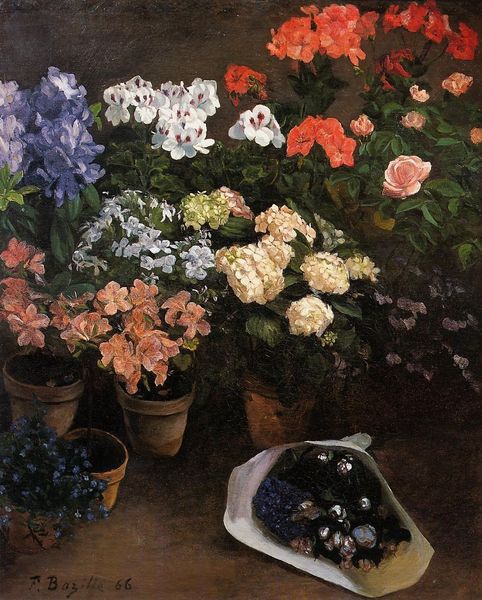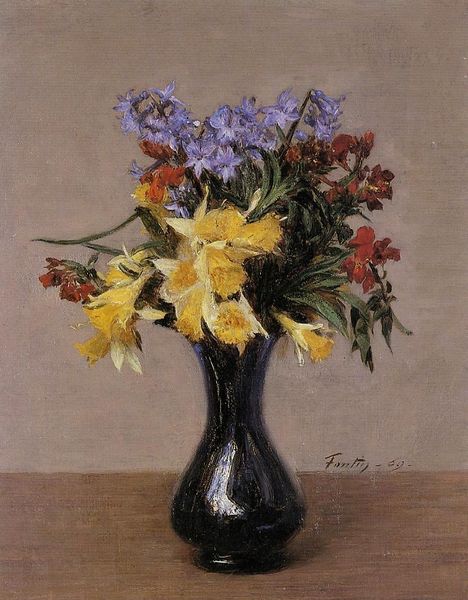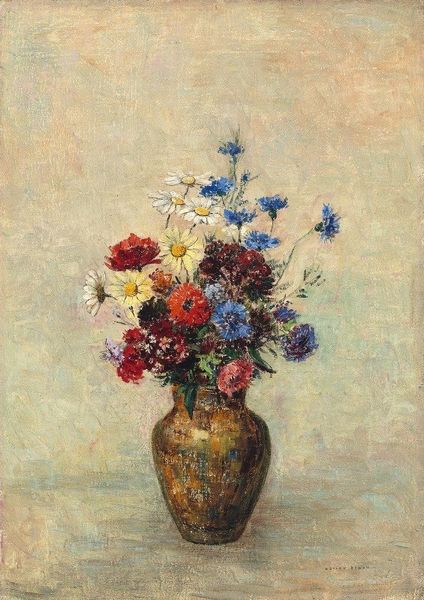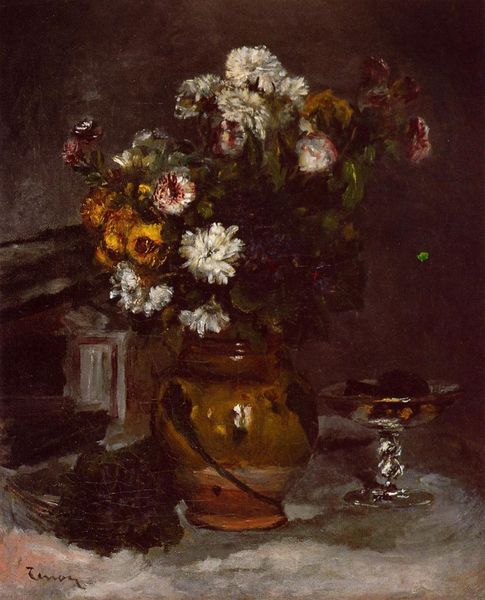
Dimensions: 80 x 80 cm
Copyright: Public domain US
Editor: This is "Lilacs and Forget-Me-Nots" by Igor Grabar, painted in 1905. It’s an oil painting of, well, exactly what the title suggests. It has a really dark, almost somber mood despite all the flowers. What strikes you about this piece? Curator: The explicit emphasis here lies on the materiality, doesn’t it? The materiality of both the subject matter—the cultivated blooms of lilac and forget-me-nots—and the artist’s tools. Think of the labor invested in producing oil paints in 1905, grinding pigments, and mixing them with oil. Then, there's the vase, a functional, perhaps even mass-produced object. And the basket – hand-woven labor. Are we elevating humble, everyday objects to high art? Editor: So you're saying it’s about more than just pretty flowers? Curator: Absolutely. Grabar draws our attention to the process. Consider the impasto technique. Thick application of paint mimicking the very texture of the blossoms. It's a deliberate act of making. The canvas becomes less of a window and more of an object itself, built from layers of labor and material. Look closely. What else hints at the conditions of artistic labor here? Editor: Well, the flowers aren't perfectly arranged. They look almost… haphazard. Like they were just brought in from the garden and quickly placed. Curator: Precisely! That impression of spontaneity further reinforces the sense of the immediate, the everyday labor involved. This isn’t some idealized, timeless beauty. It’s a fleeting moment captured with materials produced through intense labor, consumed and aestheticized. Editor: So by highlighting the materials and the process, Grabar is challenging the traditional boundaries between "high" art and the everyday? Curator: Exactly. He’s forcing us to acknowledge the means of production, the social context embedded within this seemingly simple still life. This all makes you think differently, right? Editor: It does. I’ll definitely never look at a flower painting the same way again. Curator: Nor I. These still lives encourage critical thought, which has been essential.
Comments
No comments
Be the first to comment and join the conversation on the ultimate creative platform.
